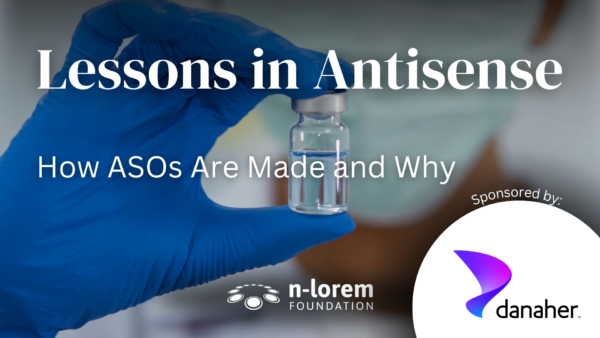Lessons in Antisense
Lesson 2 – How ASOs Are Made and Why
April 21, 2025 by Dr. Stan Crooke

Introduction
To provide drugs for clinical trials or to patients commercially, it is necessary to make the drug in larger quantities in facilities that meet current good manufacturing practices (cGMP) and to prove that the drug is sufficiently pure. One must also evaluate impurities for potential toxicities, store the drug appropriately and demonstrate that the drug is stable when stored properly.
The development of new drugs is often delayed or derailed because of challenges in scaling up synthetic schemes devised by medicinal chemists in a cost effective and safe (for employees and the environment) manner. As the manufacturing of drugs is scaled up, the risks of potential explosions, toxic solvents or intermediates increase exponentially. Moreover, as new manufacturing methods are created, new analytical methods must be developed and simplified to be used at scale in manufacturing facilities.
For small molecule drugs (SMDs), the chemistry for each new drug varies and the challenges of scaling up synthesis in a cost effective and safe way and proving that the drug is pure and has no toxicities vary depending on the chemistry of the drug molecule. In fact, it is common for the development of a small molecule drug to be delayed or disrupted by challenges in scaling up synthesis and simplifying the synthetic schemes sufficiently enough that the small molecule drug can be synthesized in a manufacturing plant.
In contrast, thanks to 35 years of work and the chemical properties of PS ASOs, manufacturing, analytical systems, and other components required to achieve FDA approval are now well established. The key factor that makes ASO technology more efficient at every step in the process of drug discovery, development, and manufacturing is that ASOs of the same chemical class have very similar properties. Consequently, a solution for one PS ASO is a solution for all PS ASOs of the same chemical class.
Caveat: While I am not a chemist, I have supervised thousands of chemists and managed many successful campaigns.
ASO manufacturing differs from the manufacturing of small molecule drugs or biologics
History
Solid-state synthesis of oligonucleotides was pioneered by Lee Hood and Mike Hunkapiller (ABI) and later commercialized by ABI and Beckman (At the time, in addition to drug discovery R&D, I was supervising Beckman’s R&D). The goal was to create instruments that any scientist could use to synthesize nanomoles (Nm) of oligos.
One of the many inane comments made by so-called “experts” was that we would never be able to produce a gram of an ASO — and if we did, it would cost $10–100 million. I did not agree. As a process chemistry problem, scaling up oligo production seemed very straightforward to me. To date, the production scale has increased by 10¹⁰, while costs have been reduced by at least 10⁸⁻⁹.
Conclusions
Because PS ASOs can be synthesized via routes that do not involve high-pressure or high-temperature reactions or exothermic (potential explosive) reactions, and because PS ASOs are quite stable, scaling up PS ASO manufacturing was reasonably straightforward. We benefitted from advances in solid state synthesizers and new, more efficient, and cost-effective solid supports, and we have transferred processes to a number of contract manufacturers. Moreover, efforts to strengthen the supply chain and improved analytical processes mean that, today, ton-scale manufacturing is easily achieved and that there are multiple vendors that can synthesize PS ASOs at scale.
A significant issue that remains is reliance on acetonitrile, a toxic solvent that must be shipped and stored in an environmentally sound manner. Further, storage and disposal of waste products from large scale synthesis is expensive. Though we have tried to replace acetonitrile with other organic solvents, we have not been successful.
As we look to the future, we expect to have more versatile and efficient manufacturing plants that can manage the process from procurement of raw materials to formulation in sterile vials. At present, manufacturing is performed in manufacturing sites and the ASO is shipped to facilities that complete the process by performing sterile fills of vials ready for use. This should make the overall process more efficient and less expensive.

We cannot do
this alone
Together we are changing the world—
one patient at a time
We hope that you join us on this journey to discover, develop and provide individualized antisense medicines for free for life for nano-rare patients. The ultimate personalized medicine approach – for free, for life.
Follow us on social for updates on our latest efforts








